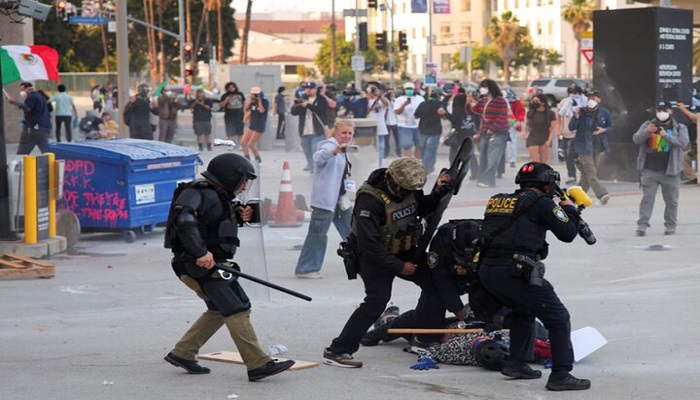PNN – In dealing with massive protesters against his immigration policies, the Trump administration chose the most basic method, namely force and the “National Guard.” But how effective is this tool of repression, and what costs does it impose on him and his party?
Tensions surrounding the Trump administration’s immigration policies have once again plunged the American political and social scene into crisis in recent days. The new Trump administration, taking a more aggressive approach than before, has implemented a series of strict policies against immigrants, refugees, and even citizens without permanent resident status; measures that have quickly been met with protest reactions across the country.
Read more:
The ongoing saga of US presidents: Trump and Rubio stumbling on steps.
Over the past three days, a wave of widespread demonstrations and marches have taken place in major American cities, especially Los Angeles, California, which were accompanied by violent clashes between security forces, the arrest of hundreds of protesters, and ultimately the entry of the National Guard into the streets.
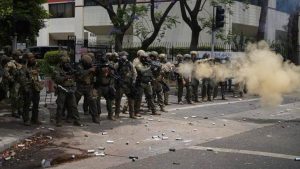
The Second Trump Administration and the Return of Immigration Strictness
Immigration has once again become a central issue in the federal government’s policymaking landscape as Donald Trump’s second term begins in January 2025. Despite promises from some Republicans to “humanely reform border policies,” Trump has ushered in a new chapter of aggressive anti-immigration policies, repeating his harsh rhetoric from 2016.
In the early months of this period, the US Department of Homeland Security (DHS) introduced a plan called “urban cleansing,” in which immigration officers were authorized to enter suburbs, working-class neighborhoods, and even municipal buildings to detain immigrants without valid documents. Unlike previous periods, these individuals were arrested not only for criminal offenses but also simply for not having legal residency.
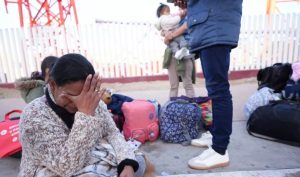
Other controversial actions of the second Trump administration include the reinstatement of the Expedited Removal policy, which allows border agents to deport many immigrants within a few days without referring them to immigration court. In addition, the “deprivation of public services” plan was also implemented; according to this plan, immigrants without a specific residence status are deprived of access to housing subsidies, free education, and state healthcare.
The Trump administration has defended these measures, emphasizing national security, combating human trafficking, and protecting the country’s financial resources. However, critics argue that these policies are the result of an ideological and racist approach to immigration that threatens social cohesion and fundamental human rights, rather than being based on a realistic analysis of threats.
A spark in the south, a fire across the country
The initial spark for nationwide protests against the immigration policies of the second Trump administration was ignited in the border city of El Paso, Texas. On Sunday, June 5, 2025, a video circulated on social media showing U.S. Immigration and Customs Enforcement (ICE) agents violently detaining an immigrant mother in front of her young child. The video, which quickly received millions of views on Twitter and TikTok, sparked a wave of public outrage.
In less than 24 hours, civil rights groups, student unions, and activists in cities like Austin, Denver, and Chicago called for rallies. What began as small, peaceful gatherings quickly escalated into large, sometimes violent demonstrations. Citizens took to the streets with slogans like “Immigration is not a crime,” “No to discriminatory policies,” and “America is home for everyone.”
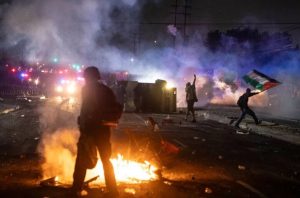
In the following days, the protests spread to dozens of other cities. In Los Angeles, New York, Philadelphia, and San Francisco, protesters gathered in front of federal buildings, Immigration and Customs Enforcement (ICE) offices, and detention centers. Some of these protests turned violent with police intervention, and dozens of people were arrested.
From civil protest to military repression as the National Guard enters the field
As the wave of public protests against Trump’s immigration policies has spread across the United States in recent days, the situation in Los Angeles has reached a boiling point. Clashes between protesters and police near an immigration detention center in the Midcity neighborhood quickly escalated, forcing the governor of California to call in the National Guard.
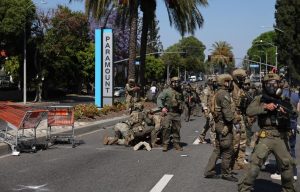
The military-style deployment of the National Guard to the streets of Los Angeles has drawn widespread criticism from political and media figures. Democratic Congresswoman Alexandria Ocasio-Cortez wrote in a statement: The Trump administration’s use of brutality and military force to silence protesters is reminiscent of the darkest moments in American history.
The New York Times, in an editorial, described the move as “a declaration of civil war against the voice of the people seeking justice” and called for immediate accountability from security and state officials. Professor Naomi Klein said in a television interview: We are witnessing a repetition of the pattern of authoritarian governments; immigrants are victimized and protesting people are repressed.
Domestic and electoral consequences; government versus society, Republicans versus themselves
The National Guard’s entry into the streets of Los Angeles and the indiscriminate use of violence against protesters is not just a tactical response to an urban crisis but a clear sign of a strategic crisis within the Trump administration and the Republican Party. Trump’s decision to escalate security pressure in the face of civil demands has revived the memory of his first administration with even greater intensity.
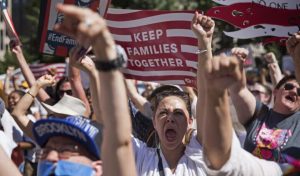
The fact that the government deploys military force in response to protests of a humanitarian and human rights nature sends the message to many independent voters and even traditional conservatives that Trump’s priority is not dialogue but control through intimidation and repression. Such an image could prove costly for the Republican Party in the run-up to the 2028 election, especially if the younger generation, minorities, and urban middle classes, who have become increasingly active in recent years, participate more in the upcoming elections.
In the intra-party dimension, the gap between the classic Republican faction (leaning towards the free market and limiting the government) and the Trumpist faction (nationalist, anti-immigration, and anti-institutionalism) has become more and more apparent. Figures such as Liz Cheney or Mitch Romansky, survivors of the traditionalist faction, have warned in informal statements that this “escalating internal tension” could reduce the party’s political legitimacy in swing states including Pennsylvania, Wisconsin, and Arizona.

